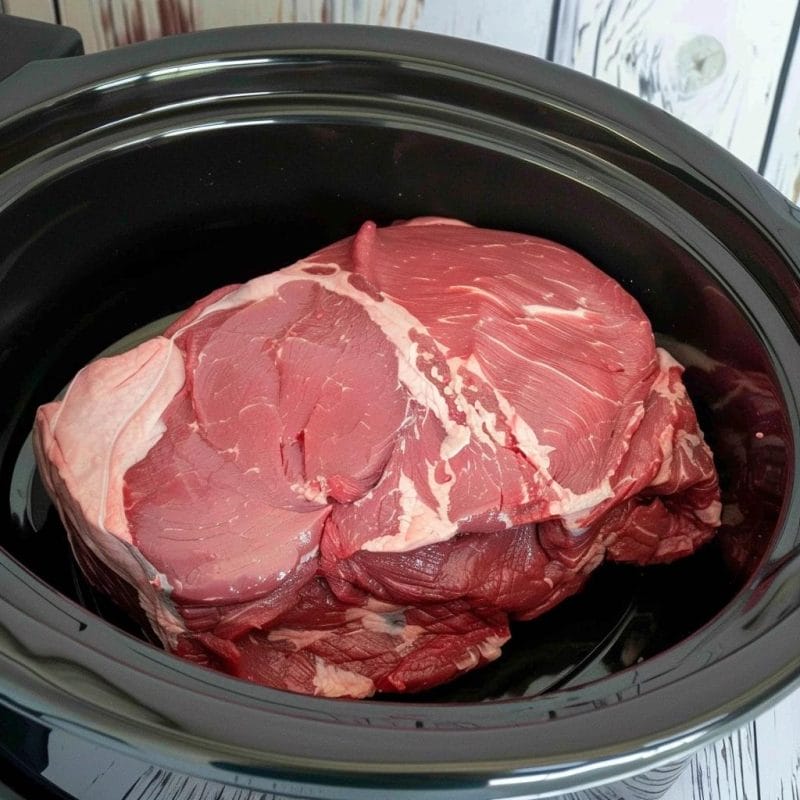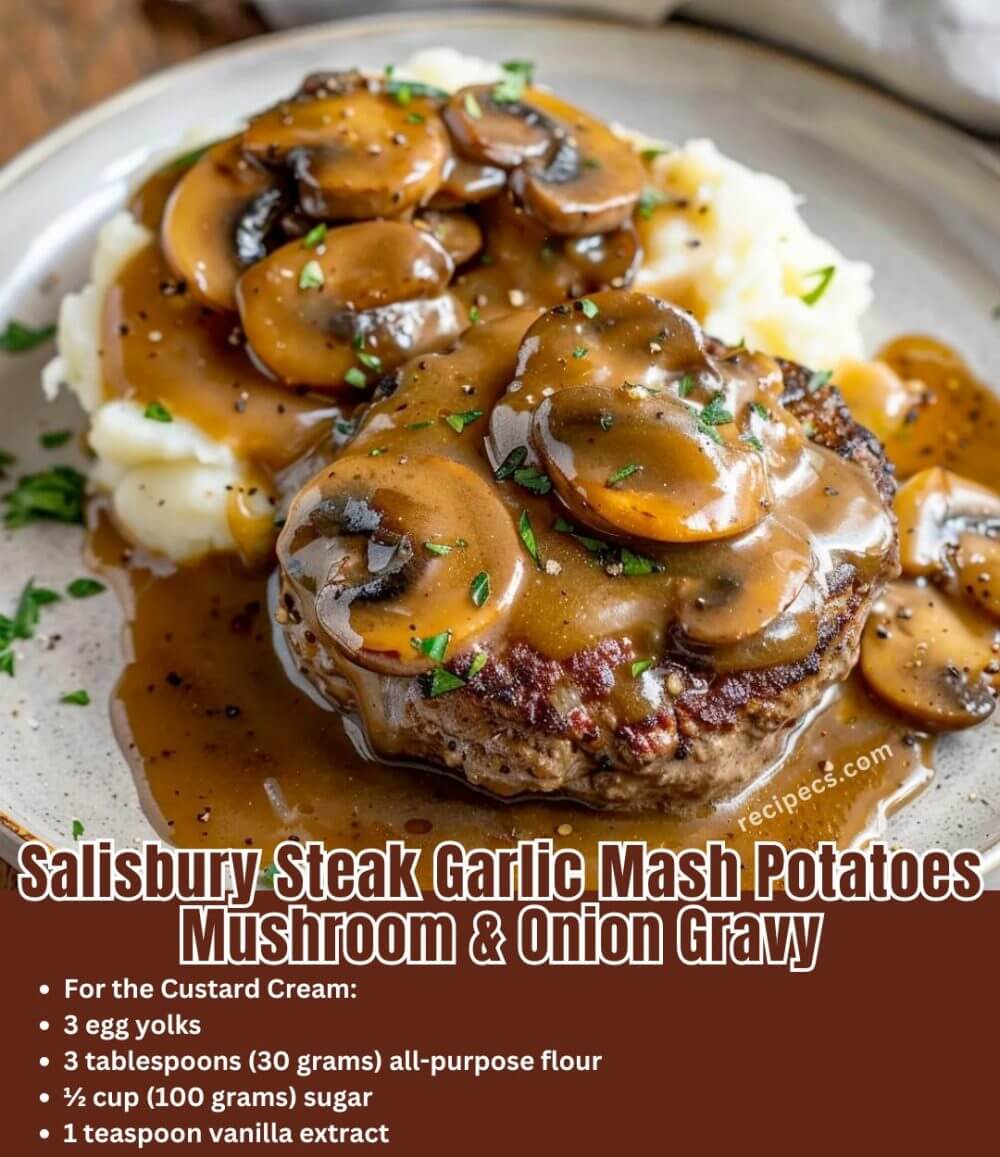Would you like to save this?
Transforming a chuck roast into a tender, flavorful meal is easier than you think. This recipe requires only 5 minutes of preparation and utilizes the slow cooker to do the hard work, resulting in a delectable dish that seems like it took hours of effort.
Ingredients:
- 2 pounds beef chuck roast
- 1 cup beef broth
- 2 garlic cloves, minced
- 4 tablespoons brown sugar
- ½ cup balsamic vinegar
- 1 tablespoon Worcestershire sauce
- 1 tablespoon soy sauce
- 1 teaspoon dried rosemary
- 1 teaspoon dried thyme
- ½ teaspoon salt
- ½ teaspoon pepper
Instructions:
Prepare the Slow Cooker: Place the chuck roast into a greased slow cooker.
Mix Ingredients: In a bowl, combine beef broth, garlic, brown sugar, balsamic vinegar, Worcestershire sauce, soy sauce, rosemary, thyme, salt, and pepper. Pour this mixture over the roast.
Cook: Cover and cook on high for 4 hours or on low for 6-8 hours.
Shred and Serve: Once cooked, remove the roast, shred it using two forks, and return it to the juices in the slow cooker before serving.
Variations:
Chuck roast is a versatile and economical cut of beef that, when cooked properly, yields an incredibly tender and flavorful meal. This recipe harnesses the power of the slow cooker, allowing you to achieve a restaurant-quality dish with minimal effort. By combining the roast with a blend of savory and sweet ingredients, the meat becomes infused with rich flavors, making it perfect for a variety of meals.
One of the best aspects of this recipe is its simplicity. The preparation time is remarkably short—just 5 minutes—making it ideal for busy individuals who still want to enjoy a home-cooked meal. The long, slow cooking process not only makes the meat tender but also allows the flavors to meld beautifully.
Variations and Substitutions
Different Cuts of Meat: While this recipe calls for a beef chuck roast, you can substitute it with other cuts such as brisket, round roast, or even pork shoulder. Each cut will bring a slightly different texture and flavor profile to the dish.
Alternative Cooking Methods: If you don’t have a slow cooker, you can use a Dutch oven. Simply follow the same steps, but cook in a preheated oven at 300°F (150°C) for 3-4 hours, or until the meat is tender.
Flavor Adjustments: Feel free to tweak the flavor profile to suit your taste. For a spicier kick, add a pinch of red pepper flakes or a chopped jalapeño. If you prefer a sweeter taste, increase the amount of brown sugar or add a tablespoon of honey.
Herb Substitutions: If you don’t have dried rosemary or thyme, you can use fresh herbs (double the amount) or substitute with other dried herbs such as oregano or basil.
Sauce Variations: Experiment with different types of vinegar, such as apple cider vinegar or red wine vinegar, to alter the tanginess. Additionally, you can replace the soy sauce with tamari for a gluten-free option or coconut aminos for a soy-free alternative.
Serving Suggestions
This balsamic chuck roast is incredibly versatile and can be served in various ways:
- Classic Dinner: Serve the shredded beef over mashed potatoes with a side of green beans or steamed vegetables.
- Sandwiches: Pile the shredded beef onto a crusty roll or baguette, top with pickles and coleslaw for a delicious sandwich.
- Tacos: Use the beef as a filling for soft tacos, garnished with avocado, cilantro, and a squeeze of lime.
- Salad Topping: Add the shredded beef to a bed of mixed greens, along with cherry tomatoes, red onion, and crumbled feta, for a hearty salad.
Storage and Leftovers
Leftovers can be stored in an airtight container in the refrigerator for up to 4 days. The flavors often deepen after sitting, making the leftovers even more delicious. You can also freeze the shredded beef in portion-sized containers for up to 3 months, making it a convenient option for meal prepping.
Conclusion
This slow-cooked balsamic chuck roast recipe is a testament to the power of simple ingredients and minimal effort. It delivers a tender, flavorful meal that can be adapted to suit various tastes and preferences. Whether you’re serving it as a main dish, in sandwiches, or as part of a salad, this recipe is sure to become a staple in your culinary repertoire. Its ease of preparation and versatility make it a perfect choice for both busy weeknights and leisurely weekends.
Turn chuck into a roast so tender, no one will know it only took 5 minutes to prep
Transform a chuck roast into an unbelievably tender and flavorful meal with just 5 minutes of prep time. This recipe uses a slow cooker to do all the work, combining the roast with a blend of savory and sweet ingredients for a delicious, melt-in-your-mouth dish that’s perfect for any occasion.
- 2 pounds beef chuck roast: A versatile (economical cut of beef that becomes tender when slow-cooked.)
- 1 cup beef broth: Adds moisture and depth of flavor to the roast.
- 2 garlic cloves (minced: Provides a robust, aromatic flavor.)
- 4 tablespoons brown sugar: Adds sweetness to balance the savory ingredients.
- ½ cup balsamic vinegar: Adds tanginess and richness to the sauce.
- 1 tablespoon Worcestershire sauce: Enhances the umami flavor.
- 1 tablespoon soy sauce: Adds saltiness and depth; substitute with tamari or coconut aminos for a gluten-free or soy-free option.
- 1 teaspoon dried rosemary: Adds earthy (aromatic flavor.)
- 1 teaspoon dried thyme: Complements the rosemary with a subtle (herbal flavor.)
- ½ teaspoon salt: Essential for seasoning the roast.
- ½ teaspoon pepper: Adds a mild heat and balances the sweetness.
- Place the 2-pound chuck roast into a greased slow cooker.
- In a bowl, combine 1 cup beef broth, 2 minced garlic cloves, 4 tablespoons brown sugar, ½ cup balsamic vinegar, 1 tablespoon Worcestershire sauce, 1 tablespoon soy sauce, 1 teaspoon dried rosemary, 1 teaspoon dried thyme, ½ teaspoon salt, and ½ teaspoon pepper. Pour this mixture over the roast.
- Cover and cook on high for 4 hours or on low for 6-8 hours until the meat is tender.
- Once cooked, remove the roast, shred it using two forks, and return it to the juices in the slow cooker before serving.
- Different Cuts of Meat: Substitute chuck roast with brisket, round roast, or pork shoulder for variety.
- Alternative Cooking Methods: Use a Dutch oven instead of a slow cooker; cook at 300°F (150°C) for 3-4 hours.
- Flavor Adjustments: Add red pepper flakes for spice, or more brown sugar for sweetness.
- Herb Substitutions: Use fresh herbs or alternative dried herbs like oregano or basil.
- Sauce Variations: Experiment with apple cider vinegar or red wine vinegar, and replace soy sauce with tamari or coconut aminos.

Turn chuck into a roast so tender, no one will know it only took 5 minutes to prep
Ingredients
- 2 pounds beef chuck roast: A versatile economical cut of beef that becomes tender when slow-cooked.
- 1 cup beef broth: Adds moisture and depth of flavor to the roast.
- 2 garlic cloves minced: Provides a robust, aromatic flavor.
- 4 tablespoons brown sugar: Adds sweetness to balance the savory ingredients.
- ½ cup balsamic vinegar: Adds tanginess and richness to the sauce.
- 1 tablespoon Worcestershire sauce: Enhances the umami flavor.
- 1 tablespoon soy sauce: Adds saltiness and depth; substitute with tamari or coconut aminos for a gluten-free or soy-free option.
- 1 teaspoon dried rosemary: Adds earthy aromatic flavor.
- 1 teaspoon dried thyme: Complements the rosemary with a subtle herbal flavor.
- ½ teaspoon salt: Essential for seasoning the roast.
- ½ teaspoon pepper: Adds a mild heat and balances the sweetness.
Instructions
- Place the 2-pound chuck roast into a greased slow cooker.
- In a bowl, combine 1 cup beef broth, 2 minced garlic cloves, 4 tablespoons brown sugar, ½ cup balsamic vinegar, 1 tablespoon Worcestershire sauce, 1 tablespoon soy sauce, 1 teaspoon dried rosemary, 1 teaspoon dried thyme, ½ teaspoon salt, and ½ teaspoon pepper. Pour this mixture over the roast.
- Cover and cook on high for 4 hours or on low for 6-8 hours until the meat is tender.
- Once cooked, remove the roast, shred it using two forks, and return it to the juices in the slow cooker before serving.
Notes
- Different Cuts of Meat: Substitute chuck roast with brisket, round roast, or pork shoulder for variety.
- Alternative Cooking Methods: Use a Dutch oven instead of a slow cooker; cook at 300°F (150°C) for 3-4 hours.
- Flavor Adjustments: Add red pepper flakes for spice, or more brown sugar for sweetness.
- Herb Substitutions: Use fresh herbs or alternative dried herbs like oregano or basil.
- Sauce Variations: Experiment with apple cider vinegar or red wine vinegar, and replace soy sauce with tamari or coconut aminos.







